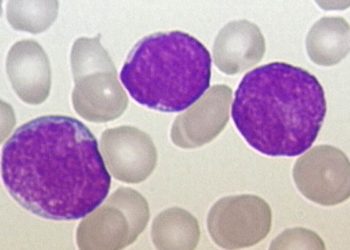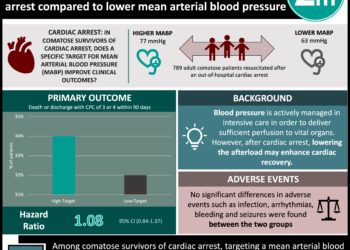Balanced crystalloids decreases adverse kidney events compared to saline among critically ill patients: The SMART trial
1. Use of balanced crystalloids (lactated Ringers or Plasma-Lyte A) was associated with a significant reduction in acute kidney injury events compared to normal saline among intensive care unit (ICU) patients.
2. Use of balanced crystalloids was also associated with lower though nonsignificant in-hospital mortality at 30-days after admission.
Evidence Rating Level: 1 (Excellent)
Study Rundown: Normal saline and balanced crystalloids are commonly used for fluid resuscitation, though scant evidence supports what choice of fluid is recommended. The literature has cited concerns regarding use of normal saline and the development of acute kidney injury. This study compared the effects of balanced crystalloids versus normal saline on clinical outcome measures in critically ill patients. The primary outcome of interest was incidence of adverse kidney events within 30 days including in-hospital mortality rates, any receipt of renal-replacement therapy, or persistent renal dysfunction. Overall, the study found use of balanced crystalloids was associated with lower rates of adverse kidney events. There were also modest though non-significant decreases in incidence of in-hospital mortality and use of renal-replacement therapy in the balanced crystalloid group.
Strengths of the study include the large sample size and numerous secondary outcomes, and a notable limitation includes lack of generalizability as the trial was conducted at a single institution Though the percent difference in adverse events between the two study groups was small, when extrapolated to the greater ICU population these results could be substantial in improving clinical outcomes for critically ill patients.
Click to read the study, published in NEJM
Relevant Reading: Effect of a Buffered Crystalloid Solution vs Saline on Acute Kidney Injury Among Patients in the Intensive Care Unit: The SPLIT Randomized Clinical Trial
In-Depth [randomized controlled trial]: This unblinded, clustered, multi-site, multiple-crossover trial enrolled 15802 patients across five ICUs between 2015 to 2017. Eligible patients were admitted to the Vanderbilt University Medical Center ICU. Patients were assigned to receive either balanced crystalloids (n = 7942) or saline (n = 7860). The primary outcome of this study was the composite outcome of adverse kidney events within 30 days, which included a death from any cause, new renal-replacement therapy, or persistent renal dysfunction. Secondary outcomes included incidence of in-hospital death.
A total of 1139 (14.3%) of patients in the balanced crystalloids group experienced a major adverse kidney event, compared to 1211 (15.4%) of patients in the normal saline group, leading to a 1.1% difference in favor of the balanced crystalloids group (marginal odds ratio [OR], 0.91; 95% confidence interval [CI], 0.84 to 0.99; p = 0.04). There were 818 (10.3%) patients in the balanced crystalloid group that died within 30 days before hospital discharge, compared to 875 (11.1%) of patients in the normal saline group (adjusted OR: 0.90; 95% CI, 0.80 to 1.01; p = 0.06). A total of 189 patients (2.5%) in the balanced crystalloid group received new renal-replacement therapy compared to 220 (2.9%) of patients in the saline group (adjusted OR, 0.84; 95% CI, 0.68 to 1.02; p = 0.08).
Image: PD
©2018 2 Minute Medicine, Inc. All rights reserved. No works may be reproduced without expressed written consent from 2 Minute Medicine, Inc. Inquire about licensing here. No article should be construed as medical advice and is not intended as such by the authors or by 2 Minute Medicine, Inc.







